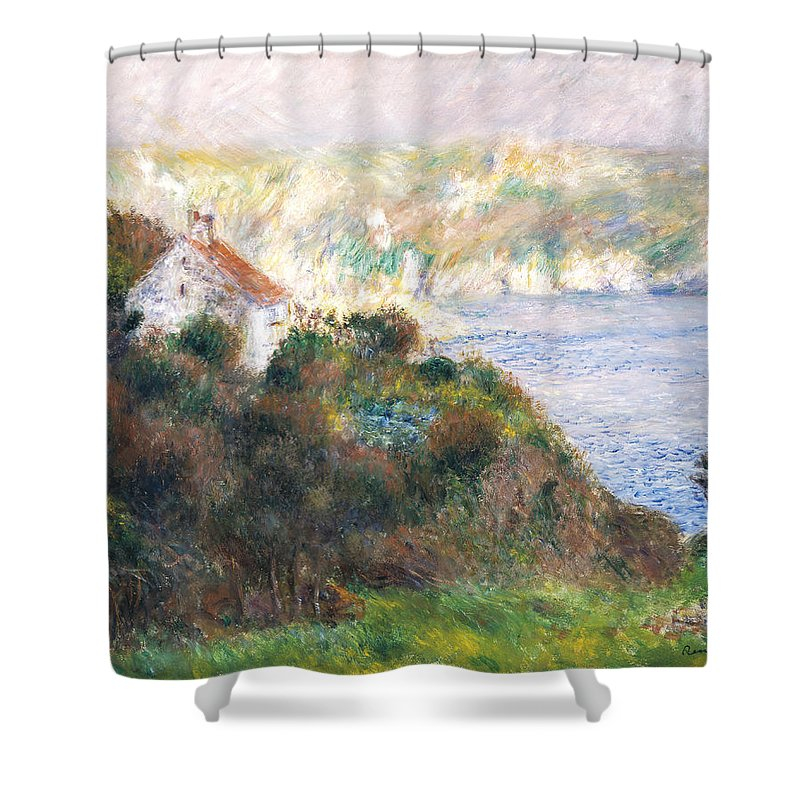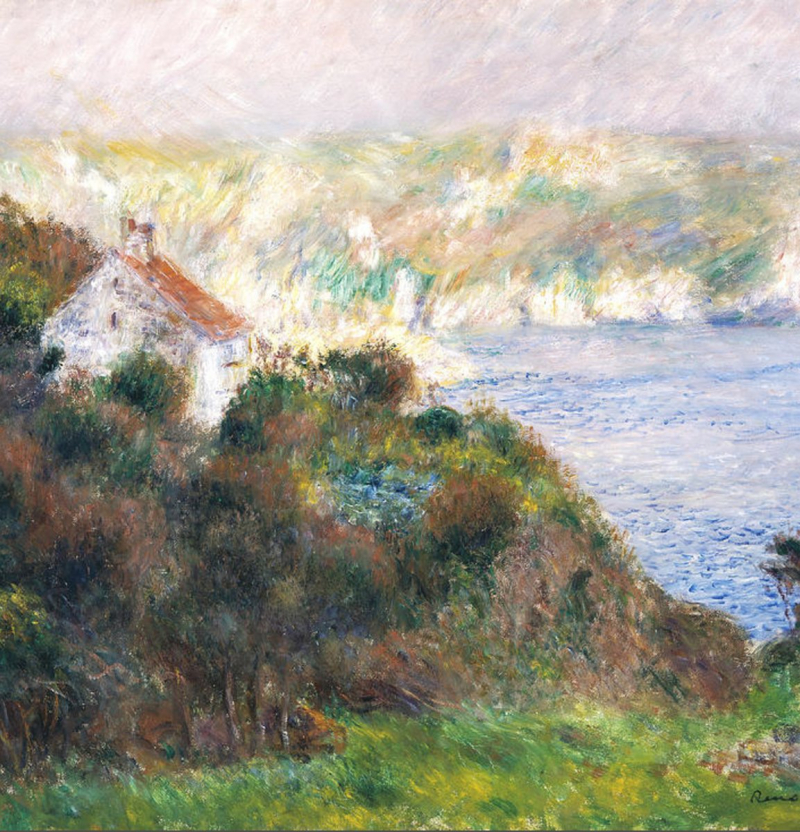Fog on Guernsey
Renoir traveled to the British island of Guernsey in the summer of 1883. About fifteen paintings of the Moulin Huet beach and bay, on the rocky southern edge of the island, were created by Renoir while he was there. The most well-known of these is probably Fog on Guernsey. The landscape is hazy, particularly the background. This demonstrates his Impressionist style while also capturing the fog's effect. Guernsey's fog is sometimes compared to Monet's 1882 painting "Fisherman's Cottage on the Cliffs at Varangéville." Although the composition of the paintings is similar, Renoir's approach can be seen in Fog on Guernsey's color scheme and paint application.
The painting "Fog on Guernsey" demonstrates Pierre-Auguste Renoir's technique and subject matter in uncharted terrain. Renoir spent a brief period of time in the late summer of 1883 on the British island of Guernsey, when he created about fifteen paintings of the region around Moulin Huet Bay. Renoir spent a lot of time on "Fog on Guernsey" throughout this time. Here, the foreground's energetic, densely layered brushstrokes give way to the far bank's more supple lines. Renoir achieved this by mimicking the concealing qualities of morning fog. The temporary and the permanent, the effervescence of the atmosphere and the firmness of the landscape, were thus reconciled by the artist.
Renoir constantly sought to internalize and reinterpret the work of his Impressionist colleagues. "Fog on Guernsey" may be a nod to Claude Monet’s "Fisherman’s Cottage on the Cliffs at Varangéville" of 1882, in the collection of the Museum of Fine Arts, Boston. Though the compositions of the two paintings are certainly similar, the color palette and the way in which paint is applied in "Fog on Guernsey" make it very much an example of Renoir’s particular style.
Location: Cincinnati Art Museum, Ohio, United States
French Title: Brouillard à Guernsey
Year: 1883









